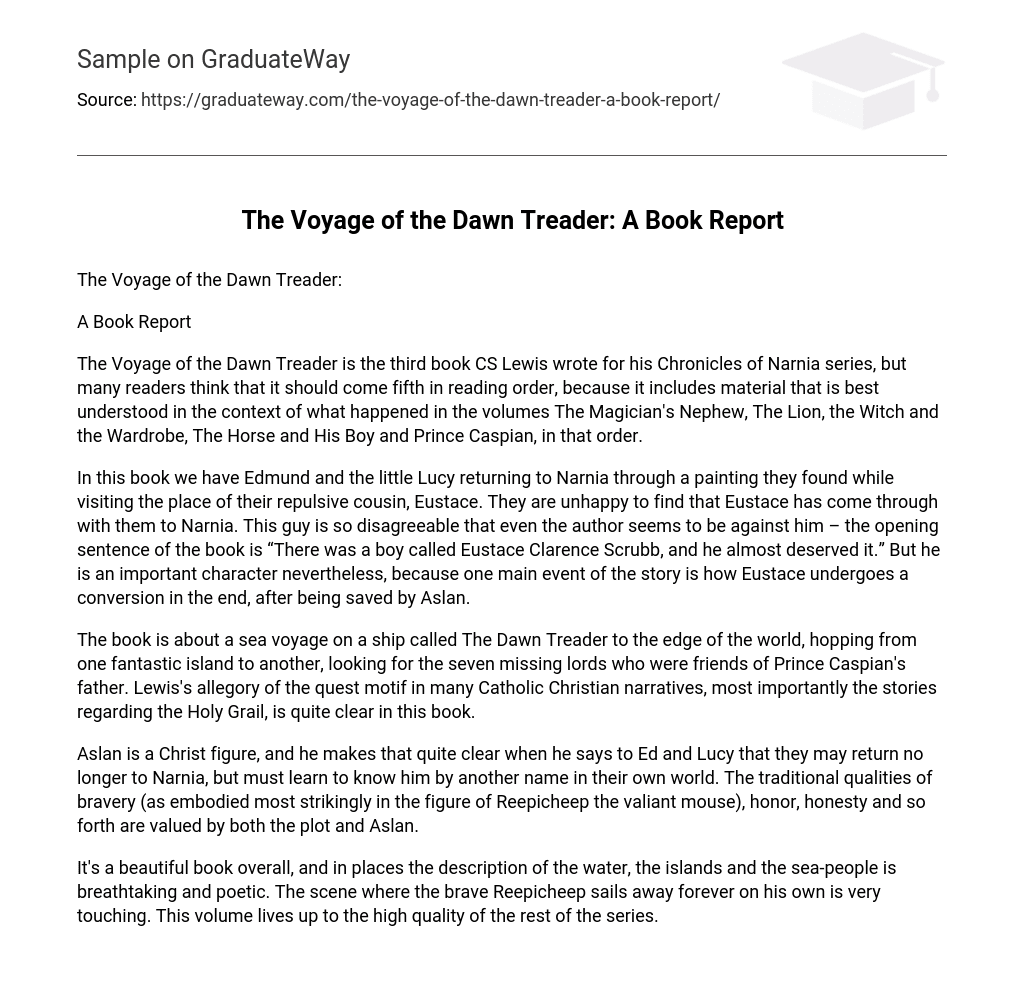The Voyage of the Dawn Treader:
A Book Report
The Voyage of the Dawn Treader is the third book CS Lewis wrote for his Chronicles of Narnia series, but many readers think that it should come fifth in reading order, because it includes material that is best understood in the context of what happened in the volumes The Magician’s Nephew, The Lion, the Witch and the Wardrobe, The Horse and His Boy and Prince Caspian, in that order.
In this book we have Edmund and the little Lucy returning to Narnia through a painting they found while visiting the place of their repulsive cousin, Eustace. They are unhappy to find that Eustace has come through with them to Narnia. This guy is so disagreeable that even the author seems to be against him – the opening sentence of the book is “There was a boy called Eustace Clarence Scrubb, and he almost deserved it.” But he is an important character nevertheless, because one main event of the story is how Eustace undergoes a conversion in the end, after being saved by Aslan.
The book is about a sea voyage on a ship called The Dawn Treader to the edge of the world, hopping from one fantastic island to another, looking for the seven missing lords who were friends of Prince Caspian’s father. Lewis’s allegory of the quest motif in many Catholic Christian narratives, most importantly the stories regarding the Holy Grail, is quite clear in this book.
Aslan is a Christ figure, and he makes that quite clear when he says to Ed and Lucy that they may return no longer to Narnia, but must learn to know him by another name in their own world. The traditional qualities of bravery (as embodied most strikingly in the figure of Reepicheep the valiant mouse), honor, honesty and so forth are valued by both the plot and Aslan.
It’s a beautiful book overall, and in places the description of the water, the islands and the sea-people is breathtaking and poetic. The scene where the brave Reepicheep sails away forever on his own is very touching. This volume lives up to the high quality of the rest of the series.





